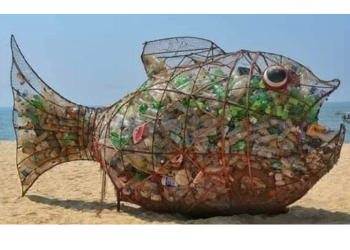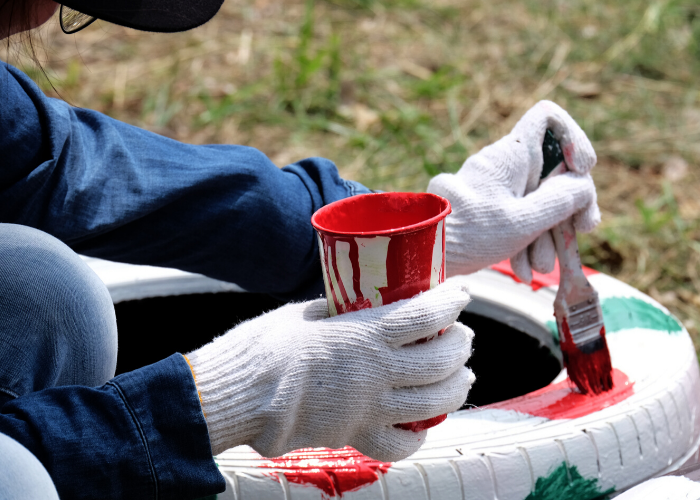The Art of Recycling
Have you heard the phrase “one man’s trash is another man’s treasure?” That’s precisely how the eco-artists of the world view your single-use plastic containers! While you see this debris as useless trash to be discarded, environmentalists of the world are finding more creative ways to put your trash to better use. You might be asking how— with the use of art installations!
Art Installations
Art installations are any 3D art piece made from raw materials, recyclables, or other solid waste. Eco-artists prefer to focus on the use of plastic, bottles, cans, and glass as their primary materials to create their works of art. The materials can either be gathered in nature (litter, trash bins, etc.), or they can be acquired upon request, or through donations.
The Purpose
Eco-artists of the world intend to evoke the emotions of their audience in the hopes of encouraging observers to become more environmentally conscious. By enlightening the general public about the harms of plastic pollution, environmental artists can inspire others to make positive changes that will effectively improve the earth for future generations to come.

Why would artists spend hours creating a piece of artwork out of litter? The answer is simple— increase environmental awareness tangibly and memorably. We are visual creatures that appreciate information when it is laid out in a visually enticing way.
For example, take the sculpture above depicting a metal fish with its mouth open, waiting to be fed. The goal of Janardhan Havanje’s sculpture is to encourage beachgoers to toss their trash into the mouth of the fish (Bedwell, 2019). As the debris continues to stack up, the belly of the fish becomes more and more full.
Since the display was eye-catching and unique, visitors at Maple Beach in India were more compelled to interact with the art installation by throwing their trash away. For example, dirty recycling bins are not as exciting as a giant metal fish in which we get to toss our plastic bottles and aluminum cans. Yes, the action itself is fun, while the subliminal message of feeding Goby the fish is teaching people of all ages the value of recycling.

While some are interactive, such as the previous example with Goby— other art installations are used to make you think. For instance, Bristol’s Whales art installation is made of 7,000 plastic bottles and is meant to depict what the environment would look like if it were engulfed with single-use plastic debris (Al-Banna, 2019). The purpose was to make viewers realize their plastic consumption, and therefore, encourage them to think twice about it in the future.
Conclusion
These art installations, while done in a creative and fun way, convey an important message that evokes thoughtfulness, and environmental awareness. While environmental issues relating to plastic consumption are becoming more of a forefront thought, it is crucial to create a tangible way to encourage others to protect the earth.
Share with us in the comments below if you have seen a new art installation or want to share the work of a well-known eco-artist— we would love to hear about it!
References
Al-Banna, Fatima (2019). Recycling and Artwork. EcoMENA. Retrieved from https://www.ecomena.org/recycling-art/
Bedwell, Sarah (2019). Fish That Eat Plastic – These Ones We Don’t Mind! PlasticGeneration.com. Retrieved from https://plasticgeneration.com/goby-the-fish-eats-your-plastic-waste/

